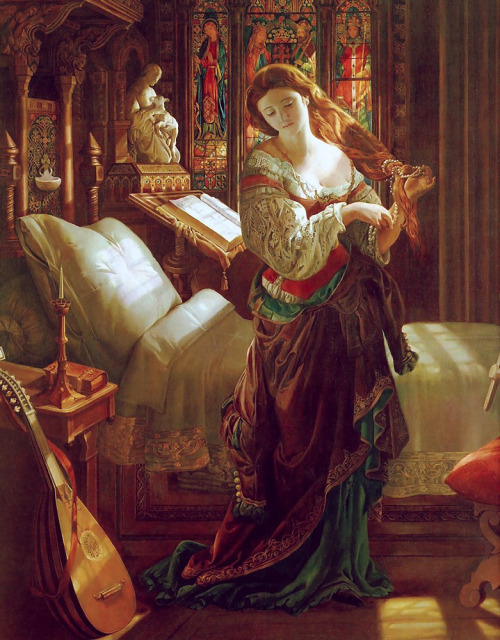#daniel maclise
MAIL-COACH TIE. Two things are absolutely requisite, rather out of the common course, to form this tie, which should resemble a waterfall. In the first place, the cloth should be immensely large; in the second, it should have no starch. The tie is made by folding the cloth loosely round the neck, and fastening it with a common knot, over which the folds of the cloth should be spread, so as entirely to conceal it.
—The Whole Art of Dress! or, The Road to Elegance and Fashion (1830) (full text online)
A focus on neckwear for Eighteen-Thirties Thursday: the mail-coach tie. I am indebted to Handbook of English Costume in the 19th Century for the examples of the two Men of Fashion for today’s post—and both by the same artist, Daniel Maclise. Descriptions of the clothes by C. Willett and Phillis Cunnington:

Benjamin Disraeli, 1830. Morning coat, strapped pantaloons, pumps with ribbon bows. Frilled shirt with wrist ruffles and ‘mailcoach’ neckcloth. (National Portrait Gallery)

Henry Phipps, 1st Earl of Mulgrave, etching dated 1830-1838. Frock coat, double-breasted; strapped pantaloons; 'mail-coach’ or 'waterfall’ neckcloth. (British Museum)
Daniel Maclise - Madeline After Prayer (1868)
Tomorrow is the feast of St. Agnes, meaning that tonight, according to superstition, if a woman performed certain rituals before going to bed, she would dream of her future husband. It was largely popularized by one of John Keats’ most famous poems, The Eve of St. Agnes. If you’re into a little medieval high romance and some light Catholic mysticism like the Victorians were, this is the night for you.
Post link

